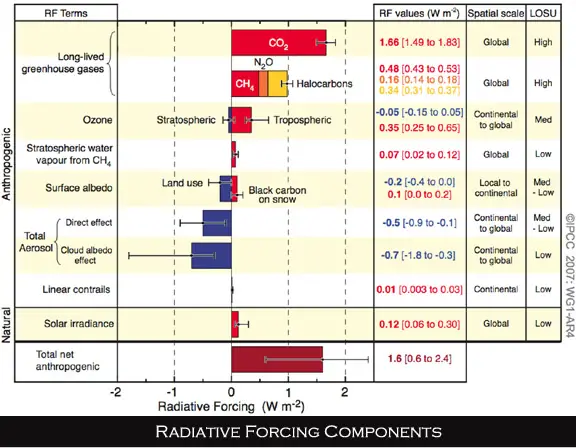Radiative forcing refers to changes in the atmospheric abundance of greenhouse gases and aerosols, in solar radiation and in land surface properties that are altering the energy balance of the climate system. In the 4th IPCC Report these changes are expressed in terms of radiative forcing (RF), which are used to compare how a range of human and natural factors drive warming or cooling influences on global climate.
RF is a measure of the influence that a factor has in altering the balance of incoming and outgoing energy in the Earth-atmosphere system and is an index of the importance of the factor as a potential climate change mechanism. Positive forcing tends to warm the surface while negative forcing tends to cool it. In the context of the IPCC reports and climate change variations such as the Earth’s orbit around the Sun, or volcanic activity that can alter the energy balance are not factored in. The Earth’s orbit (e.g. Milankovitch cycles ) is not a factored component due to the significant spans of time involved, and is irrelevant in the context of human induced forcing. Although volcanic aerosols contribute an additional natural forcing they are not included the figure due to their episodic nature.

The IPCCs 4th Report states a “very high confidence [9 out of 10 chance that it will happen] that the globally averaged net effect of human activities since 1750 has been one of warming, with a radiative forcing of +1.6 [+0.6 to+2.4] W m” (see figure above).
In other words, warming of the climate system is unequivocal and human activity has produced this warming. This finding is couched in much stronger language than the 3rd IPCC Report and is no longer something requiring debate… Earth’s temperature is rising due to our activity, and in particular the burning of fossil fuels.
